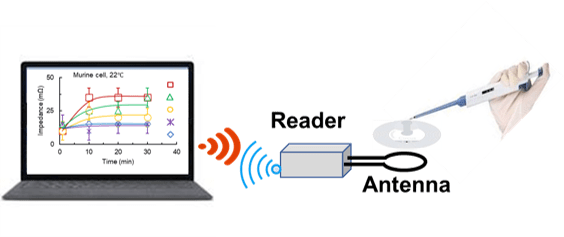Development of Bioscaffold for Detection of Cell Metabolics
Student: Yang Tian
Degree: Ph.D., August 2024
Major Professor: Dr. Ryan Tian
Research Area(s):
Biological Materials & Devices
Nanoscale Materials & Devices
Background/Relevance
-
The virus detection methods such as PCR and ELISA have built-in problems of being expensive, or labor-intensive, slow, user-unfriendly, and high false positive and false negative rates
-
These methodologies cannot distinguish if viral RNAs and proteins are from live or dead viruses
Innovation
-
The ultrafast ion transport on a new nanocomposite affords a low-cost, wireless, sensitive virus RFID-sensor newly
-
The new sensor is first time used on sensing living virus and verifying infection- or vaccination-induced antibodies’ efficacy
Approach
- Optimize the nanocomposite morphologies and structure using new nanosynthesis routes
- Optimize the sensor using new coating methods
- Optimize the sensor set up
- Analyze the ultrahigh frequency sensing data
- Develop the new metabolomic virus-sensor concept based on the data
- Simulate the charge transport to help optimize the sensor design

Key Results
- The nanocomposite is biocompatible
- The novel nano-RFID sensor can detect the living viruses at both room temperature and 37°C
- Detect the effectiveness about the COVID19 antibodies which can largely help the vaccine development

Conclusions
-
The new nanocomposite has high ionic conductivity due to the special lattice- and surface-structures
-
This virus-sensor is highly biocompatible and sensitive, ideal for identifying whether the virus is alive and infectious or not
Future Work
-
Dope different transition metals into the nanowire to boost the nanowire conductivity and in turn the sensors sensitivity
-
Develop the handheld palm size wireless detector
-
Turn the cell-culture wells to the array of in-situ, real-time, wireless monitors
